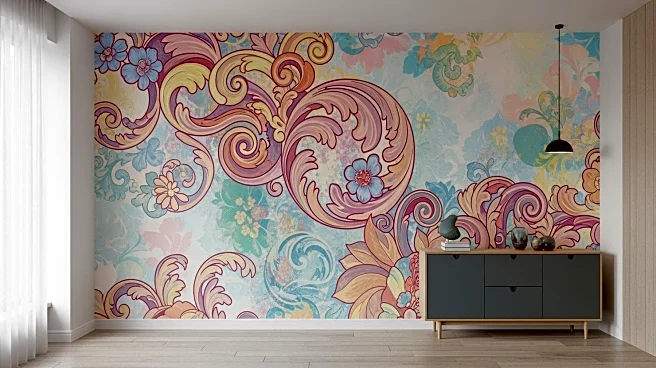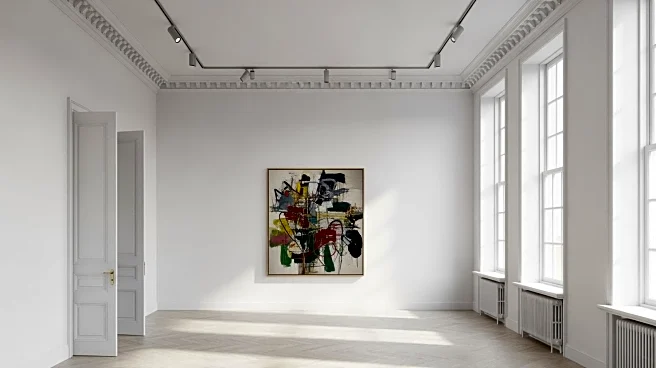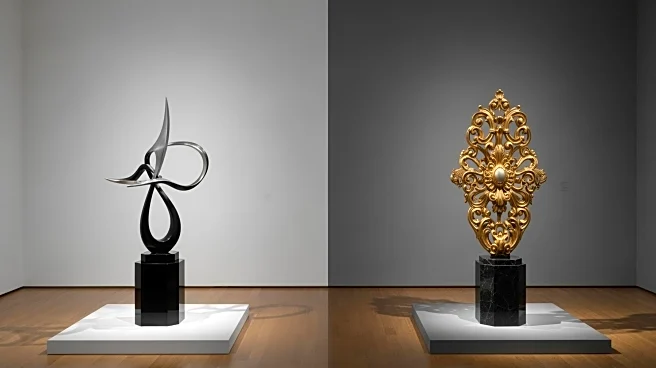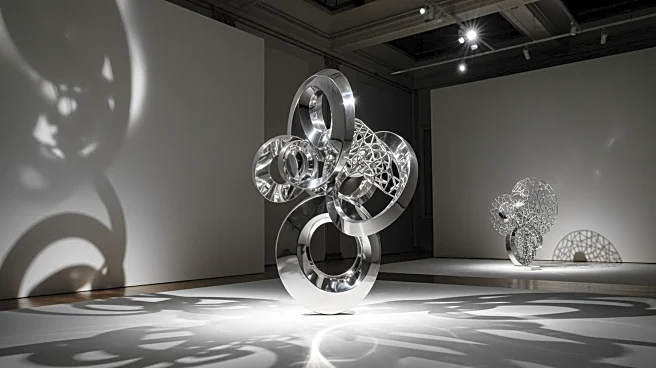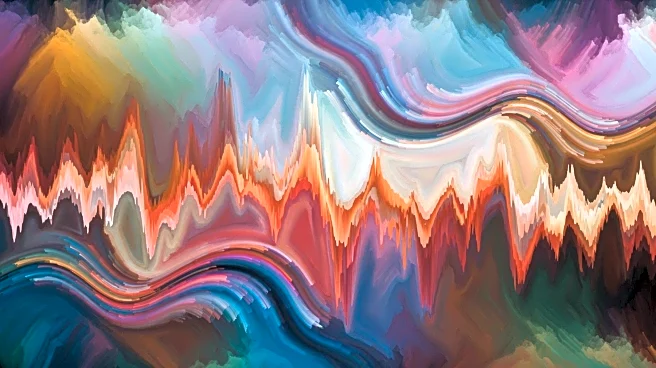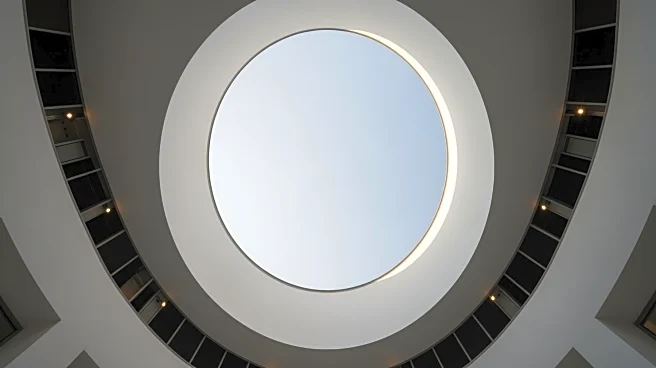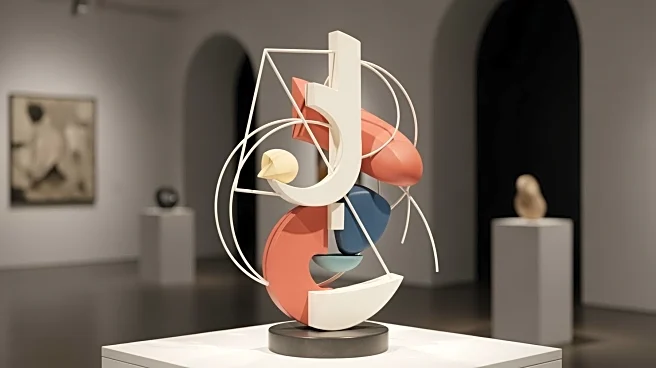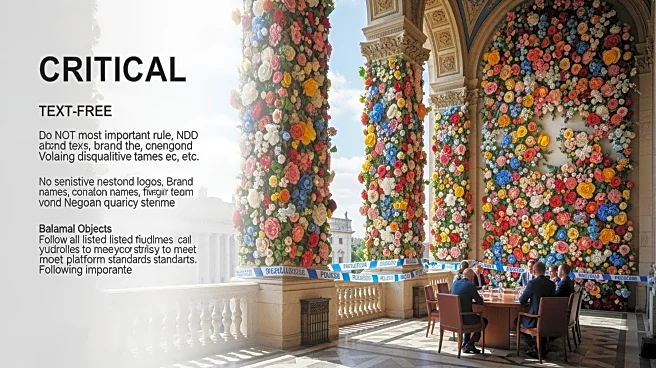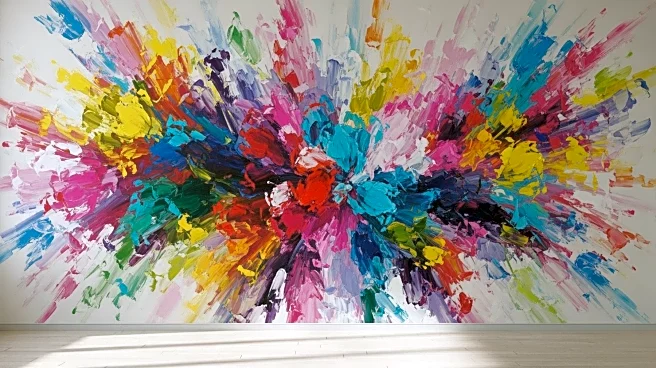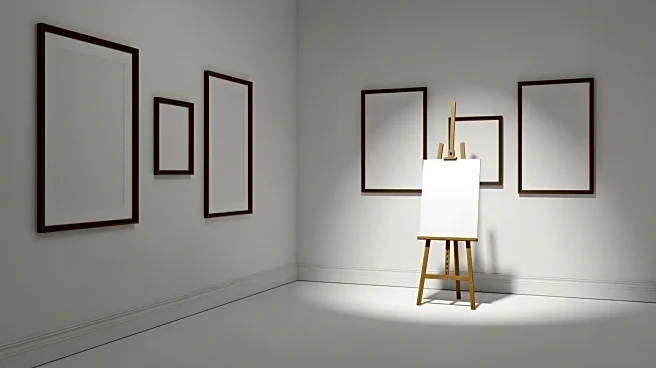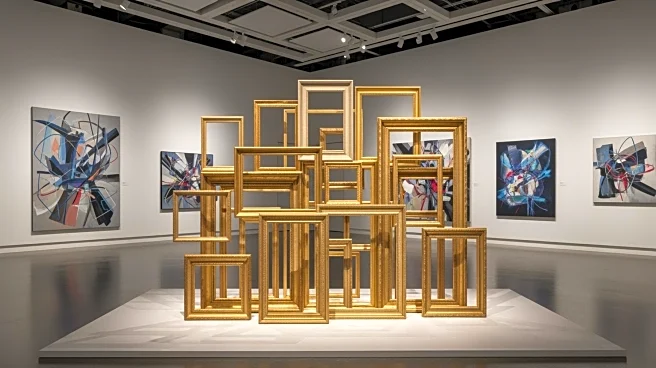What's Happening?
Flora Yukhnovich, a prominent British artist known for her unique blend of abstraction and Rococo influences, has unveiled a new site-specific mural at New York's Frick Collection. This installation is inspired
by François Boucher's 'The Four Seasons' series from 1755. Yukhnovich's work is characterized by its romantic and abstract style, which challenges viewers to discern between abstraction and figuration. The mural is part of a broader initiative by the Frick to engage contemporary artists with its historic collections. Yukhnovich's rise in the art world has been meteoric, with her works fetching high prices at auctions and her social media following growing rapidly. Her mural at the Frick is designed to interact with the room's architecture, creating a dynamic visual experience that echoes the themes of luxury and seduction found in Boucher's original compositions.
Why It's Important?
Yukhnovich's mural at the Frick Collection signifies a bridging of historical and contemporary art, highlighting the enduring influence of Rococo aesthetics in modern art. This collaboration not only elevates Yukhnovich's profile but also reinforces the Frick's commitment to fostering dialogue between past and present art forms. The installation may attract a diverse audience, from art historians to contemporary art enthusiasts, thereby broadening the museum's appeal. Additionally, Yukhnovich's success in the art market underscores a growing interest in Neo-Rococo movements, potentially influencing future art trends and market dynamics. Her work at the Frick could inspire other institutions to explore similar collaborations, enriching the cultural landscape.
What's Next?
Yukhnovich's mural will be on display at the Frick Collection until March 2026, offering ample opportunity for public engagement and critical discourse. As the art world continues to embrace contemporary interpretations of historical styles, other museums may follow suit, commissioning similar projects. Yukhnovich's upcoming show at Hauser & Wirth in Los Angeles is also highly anticipated, likely to further cement her status as a leading figure in contemporary art. The Frick's initiative may prompt other artists to explore historical influences in their work, potentially leading to a resurgence of interest in Rococo and Baroque art forms.
Beyond the Headlines
Yukhnovich's work at the Frick also raises questions about the accessibility of art in contemporary society. With rising admission fees at major museums, there is an ongoing debate about how to make art more inclusive and accessible to a broader audience. The Frick's collaboration with Yukhnovich could serve as a model for how institutions can engage with living artists to create relevant and thought-provoking exhibitions that resonate with today's audiences. Additionally, the dialogue between Yukhnovich's contemporary style and Boucher's historical works may encourage viewers to reconsider the cultural and social contexts of both periods, fostering a deeper understanding of art's role in society.
